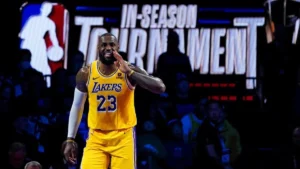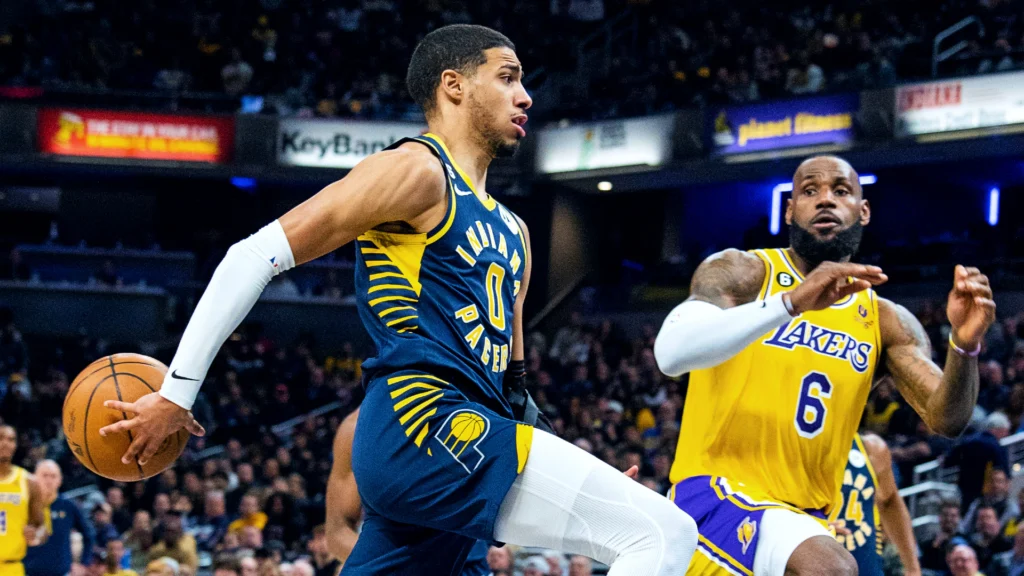Introduction to the Pacers vs Lakers Match
The matchup between the Indiana Pacers and the Los Angeles Lakers carries significant weight in the context of the NBA season. Historically, these two franchises have demonstrated competitive spirit, fostering a rivalry that excites fans and analysts alike. While both teams have had their fair share of ups and downs, their meetings on the court often promise thrilling basketball dynamics and showcase the incredible talent present in the league.
This rivalry is not merely anecdotal; it is underscored by a number of high-stakes encounters, playoff battles, and memorable moments etched into the annals of basketball history. The unmistakable tension that reverberates through Pacer and Laker games adds an element of drama, as both teams strive to outperform the other. For players, these matchups present a unique opportunity to shine and prove their mettle against a historically storied franchise.
The stakes can be particularly high during a season where playoff positioning is on the line. A win against a team like the Lakers can bolster the Pacers’ confidence as they navigate the perilous waters of an NBA season. Conversely, for the Lakers, securing a victory would enhance their standing, especially as they endeavor to maintain their place among the league’s elite. Individual player performances during these games can significantly influence not only the outcome of the match but also the narrative surrounding each franchise’s season.
As we delve deeper into the player statistics from this matchup, it becomes clear that understanding these individual contributions is crucial. The performances of both teams’ key players could very well determine the fate of the game on any given night. It is this interplay of rivalry, significance, and individual prowess that continues to make the Pacers vs Lakers matchup a highlight of the season.
Key Player Performances from the Match
In the thrilling clash between the Pacers and Lakers, several key players emerged, showcasing their skills and significantly impacting the game’s outcome. For the Los Angeles Lakers, LeBron James displayed an exceptional performance, contributing 32 points, 10 rebounds, and 8 assists. His ability to facilitate the offense while still scoring efficiently highlighted his dual-threat capability. Comparing these statistics to his season averages of approximately 26 points, 8 rebounds, and 7 assists, it is evident that James exceeded expectations, demonstrating his leadership and clutch ability in crucial moments.
On the other side of the court, Tyrese Haliburton of the Indiana Pacers was pivotal, scoring 28 points while adding 9 assists and 5 rebounds. Haliburton’s shooting efficiency, highlighted by a shooting percentage of 54%, played a critical role in keeping the Pacers competitive. His performance was notably above his season averages of 20 points and 8 assists, showcasing his growth and ability to rise to the occasion against high-caliber opponents. Notably, his proficiency from beyond the arc added significant value, as he drained 4 three-pointers, enhancing the Pacers’ offensive arsenal.
Furthermore, Anthony Davis contributed impressively for the Lakers, posting a double-double with 24 points and 12 rebounds. Davis’s defensive presence and rebounding prowess were indispensable, influencing the game’s tempo and minimizing the Pacers’ second-chance opportunities. His performance aligned closely with his season averages and demonstrated his consistent ability to impact both ends of the court. Conversely, Pacers’ center, Myles Turner, showcased his shot-blocking ability, recording 3 blocks alongside 15 points, reinforcing his reputation as a top-tier rim protector.
In conclusion, the standout performances from both teams revealed the significance of individual contributions in a tightly contested matchup, making it clear that each player brought their A-game, further intensifying the rivalry between the Pacers and Lakers.

Statistical Analysis and Comparisons
The recent matchup between the Indiana Pacers and the Los Angeles Lakers presented a captivating illustration of basketball statistics, revealing significant insights into each team’s performance. This analysis seeks to dissect key metrics that highlight individual contributions while also considering the broader team dynamics throughout the game. By analyzing statistics such as field goal percentage, turnovers, and defensive efficiency, we can glean valuable conclusions about the overall effectiveness of both squads.
In examining shooting percentages, the Pacers demonstrated a commendable performance, achieving a field goal percentage of 48%, while the Lakers lagged behind at 45%. Such figures indicate the Pacers’ more effective scoring efforts, which can be attributed to their efficient ball movement and shot selection. Furthermore, the three-point shooting percentage also deserves attention, with the Pacers converting 38% from beyond the arc, compared to the Lakers’ 32%. This disparity significantly influenced the game outcome, as three-point shooting has become an increasingly vital component of modern basketball.
Turnovers are another critical area of analysis. The Pacers managed to maintain a turnover rate of 12, while the Lakers experienced a surge of 16 turnovers. This difference is indicative of the Pacers’ greater control and discipline during possessions. Additionally, one cannot overlook the defensive stats; the Pacers secured 8 steals and 5 blocks, showcasing a robust defensive performance that hindered the Lakers’ offensive plays. In contrast, the Lakers struggled with their defensive efficiency, allowing the Pacers to capitalize on their scoring opportunities.
When combining individual player stats with team-related statistics, we develop a holistic view of the game’s dynamics. The intricate balance of offensive and defensive play styles of both teams ultimately shaped the final score. The statistical analysis serves as a foundation for understanding the strengths and weaknesses of the Pacers and Lakers, providing a thorough snapshot of their performances and implications for future matchups.
Conclusion and Implications for Future Games
In examining the player statistics from the recent Pacers versus Lakers matchup, several key insights emerge that are pivotal for understanding the broader context of the season. The performance metrics highlight not only individual player contributions, but also how these efforts collectively influence team dynamics. The Pacers showcased exceptional offensive efficiency, with notable contributions from key players that may suggest a shift in their competitive trajectory as the season progresses. Conversely, the Lakers, despite their loss, exhibited resilience through standout performances from their star athletes, indicating potential for improvement in subsequent games.
The implications of these statistics extend beyond just the immediate outcome of the game. For example, the efficiency and effectiveness of certain players could alter their standings in all-star selections and individual accolades as the campaign unfolds. Moreover, understanding these performance trends will be crucial for both teams as they prepare for future matchups. Coaches can utilize this data to devise strategies that maximize strengths while mitigating weaknesses observed in prior games.
Fan reactions following the match reflected a mix of excitement and concern, mirroring the performances seen on the court. Many supporters expressed optimism regarding player development and potential playoff berths, even amidst setbacks. Expert opinions further underscore the significance of these performances; analysts emphasize the need for adaptive strategies based on player stats to enhance competitiveness in an ever-evolving league.
Ultimately, the insights drawn from the Pacers vs Lakers game serve as a valuable reference point for players and coaches alike. As teams assess their standings and prepare for future contests, the importance of performance analytics cannot be overstated. This game may well act as a catalyst for strategic shifts throughout the season, making it essential for both franchises moving forward.
